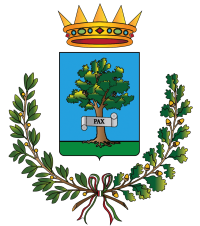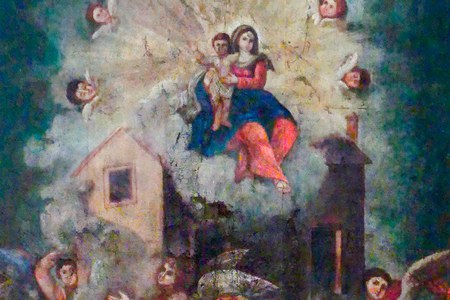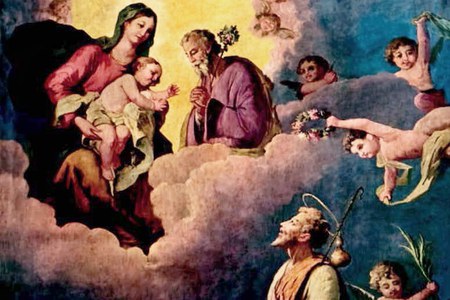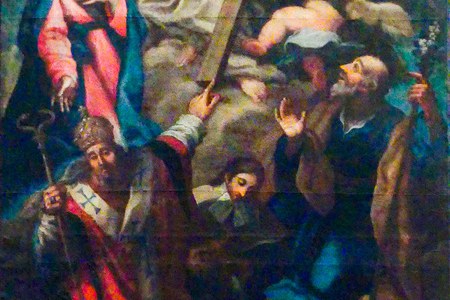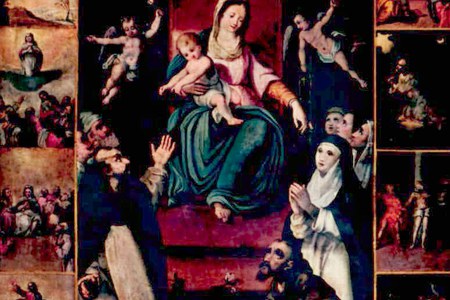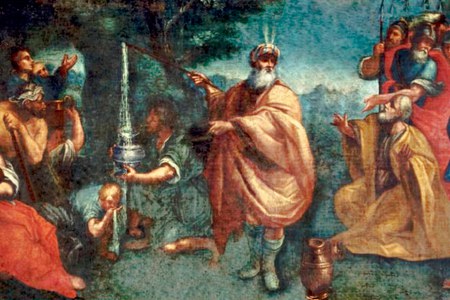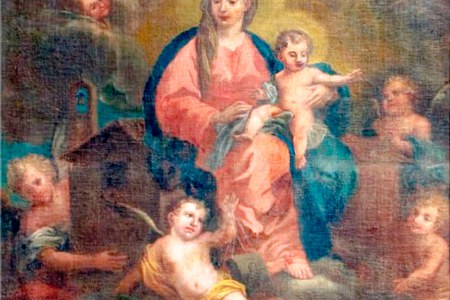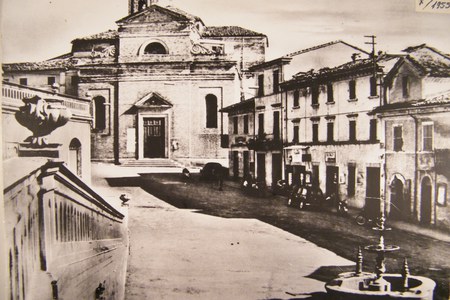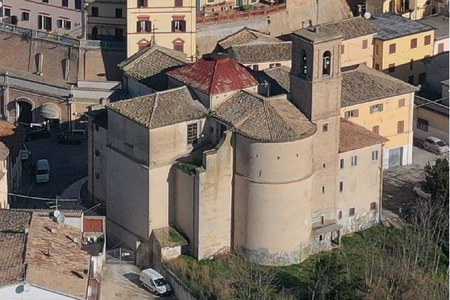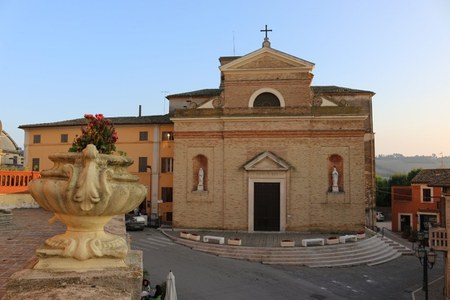Church of St. Antonino Martyr
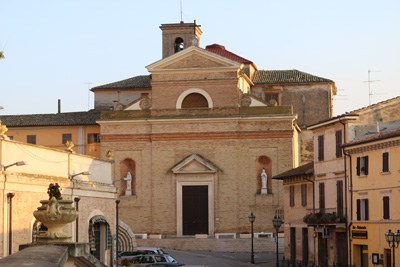 The oldest historical information report on the existence in Polverigi of a parish church governed by the Avellanites and dedicated to St. Damian, dating back to the 9th century. After 1100 the structure began to decline rapidly, thus requiring the construction of a new temple, on the site where the present building stands today. The new church was started in the early 12th century and it was ruled by the Avellanites until the early 1400s. It passed to the secular clergy and was dedicated to St. Antoninus Martyr. After being remodeled several times, that temple was demolished in 1787 because it was unsafe and small by the time. Thus the parish church, with a Greek-cross plan, was rebuilt between 1848 and 1857 by the parish priest Don Agostino Pugnaloni's will: it was based on a neoclassical-style project by engineer Giovanni Battista Gabuzzi, known for having designed the current building, seat of the Rectorate of the University of Ancona, in Piazza Roma.
The oldest historical information report on the existence in Polverigi of a parish church governed by the Avellanites and dedicated to St. Damian, dating back to the 9th century. After 1100 the structure began to decline rapidly, thus requiring the construction of a new temple, on the site where the present building stands today. The new church was started in the early 12th century and it was ruled by the Avellanites until the early 1400s. It passed to the secular clergy and was dedicated to St. Antoninus Martyr. After being remodeled several times, that temple was demolished in 1787 because it was unsafe and small by the time. Thus the parish church, with a Greek-cross plan, was rebuilt between 1848 and 1857 by the parish priest Don Agostino Pugnaloni's will: it was based on a neoclassical-style project by engineer Giovanni Battista Gabuzzi, known for having designed the current building, seat of the Rectorate of the University of Ancona, in Piazza Roma.
In 1894, by the parish priest Don V. Bianchi's will, the church was lengthened by three meters by engineer Giuseppe Buffoni, who completely redid the façade, whereas the interior pictorial decorations were done in the early 1900s by Giuseppe Cherubini. The damages caused by the 1972 earthquake made it necessary to rebuild the entire floor. According to tradition, St. Antoninus Martyr, whose anniversary is celebrated on Sept. 2nd, was born in Aribazos, Syria, where he lived between 337 and 360. A stonemason by profession, he died at the age of 20 killed by pagans while working on the construction of a church dedicated to the Holy Trinity. Legend has it that between the 4th and 7th centuries his remains were transported to France on a boat pulled by two eagles, and a monastery was later founded there.
The interior
The interior of the church is in a perfect Greek cross plan intersected by a square. The side arms of the cross, in two opposing chapels, house the altars of the Sacred Heart and Our Lady of Sorrows, whose icon is contained in an eighteenth-century wooden frame with golden rays. Lastly, other two altars are located at the end of the side aisles and are dedicated to St. Joseph and Our Lady of Fatima. In the rear façade there are the 19th-century organ and a baptismal font. The main altar is dedicated to the Syrian Saint Antoninus Martyr of Apamea: in the background of the altar dominates the large altarpiece made in 1904 by Francesco Cherubini, a painter from Ancona and one of Podesti's pupil, depicting Saint Antoninus genuflected on the slopes of a hill near a spring, while he has the vision of the Holy Family surrounded by angels and cherubs and he is pointing out to to the virgin and Child the town of Polverigi, lighted up by the midday sun. "The Deposition," considered one of the best works by Ercole Ramazzani from Arcevia, who lived between 1535 and 1598, stands out above all other works inside the church. It depicts the deposition of Christ from the Cross, and the iconography of the Counter-Reformation is masterfully interpreted and respected by the artist, who treasures the Mannerist experiences of the various Zuccari, Tibaldi, Bellini, Raphael and Michelangelo, without forgetting Lorenzo Lotto, in whose workshop Ramazzani spent three years.
